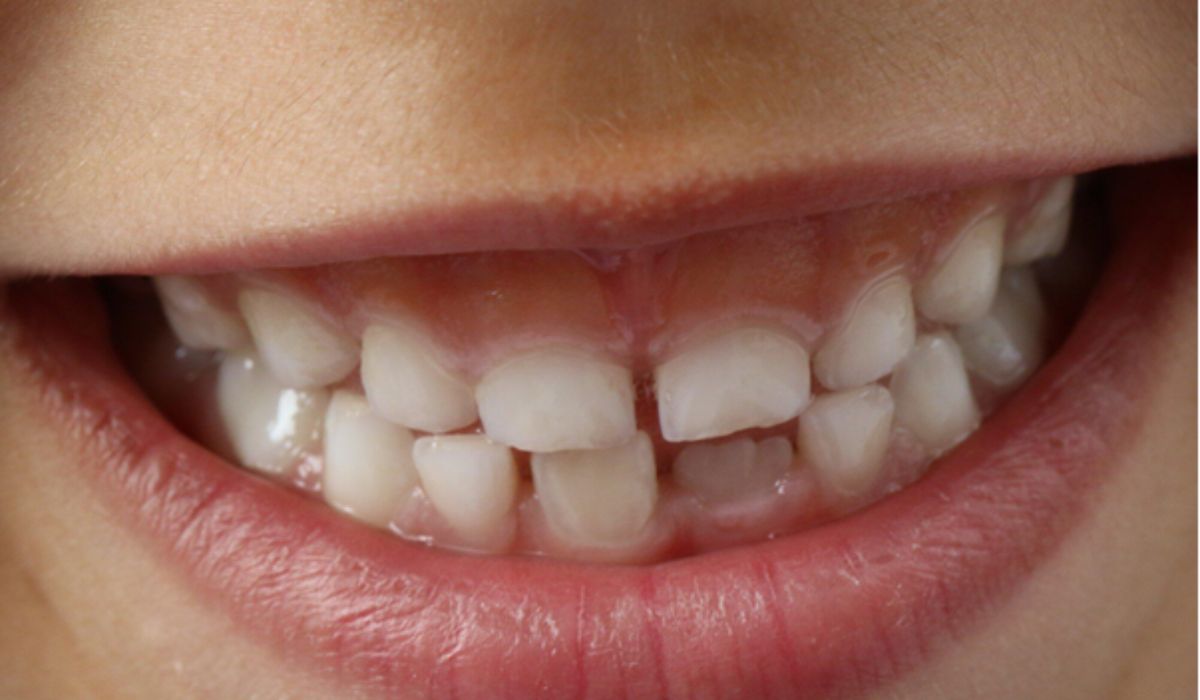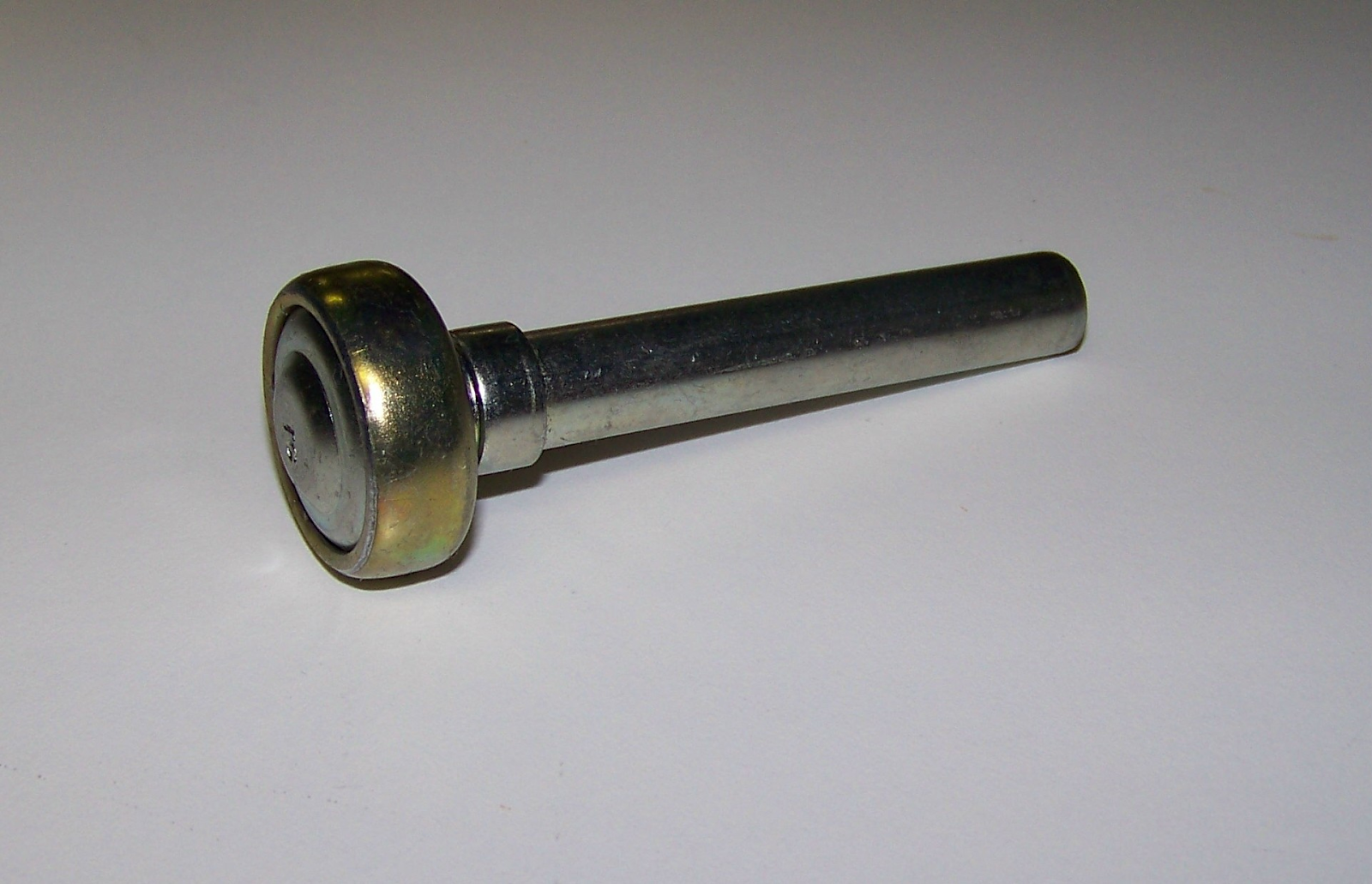HEALTH
Tired and Tested Methods for Fixing Gap in Teeth: What Works Best?

Do you shy away from smiling because of a gap between your teeth? You’re not alone. Many people experience this common dental issue. They seek solutions for a more confident smile.
Fortunately, there are several tried and tested methods for fixing gap in teeth. In this blog post, we’ll explore these options. We will provide the information you need to choose the best treatment for your needs.
Read on!
Braces
Braces are a tried and tested method for fixing gaps in teeth. They work by gradually moving your teeth into the desired position using archwires and brackets. Braces may be made of metal, ceramic, or plastic materials. They can also come in different types such as traditional braces, lingual braces that are placed behind the teeth, and clear aligners like Invisalign.
While braces may take longer to achieve results compared to other methods, they are considered one of the most effective ways to fix gaps in teeth. They also have the added benefit of correcting other dental issues such as misaligned bites and crooked teeth.
However, wearing braces can be uncomfortable and require frequent visits to the orthodontist for adjustments. They may also be more noticeable compared to other options, which can affect self-confidence.
Clear Aligners
As mentioned, clear aligners like Invisalign are an alternative to traditional braces for fixing gaps in teeth. They work by using a series of custom-made clear aligners that gradually shift your teeth into the desired position.
Clear aligners offer many benefits such as being virtually invisible and can be removed while eating and brushing your teeth. They also require less frequent visits to the orthodontist compared to braces. However, they may not be as effective for more severe cases and may take longer to see results.
Dental Bonding
Dental bonding is another popular method for fixing gaps in teeth. It involves applying a tooth-colored resin material to the affected area and then shaping and hardening it with a special light. This method is relatively quick and can be completed in one visit to the dentist.
Dental bonding for tooth gaps is also less expensive compared to other options, making it more accessible for those on a budget. However, the results may not last as long as braces or clear aligners, and the material used may be susceptible to staining or chipping.
Moreover, dental bonding can only fix small gaps and may not be suitable for more severe cases. This treatment may also require regular touch-ups to maintain its appearance.
Porcelain Veneers
Porcelain veneers are thin, custom-made shells that are bonded to the front surface of your teeth. They can be used to cover gaps and other cosmetic imperfections such as chips and discoloration. Veneers are a more permanent option compared to dental bonding, with results lasting up to 10-15 years.
Veneers offer a natural-looking solution for fixing gaps in teeth without the need for braces or clear aligners. However, they can be expensive, and the process may require multiple visits to the dentist for preparation and placement.
Composite Veneers
Composite veneers are similar to porcelain veneers, but they use a tooth-colored resin material instead of porcelain. They can also be used to cover gaps and other cosmetic issues.
One advantage of composite veneers is that they can be completed in one visit to the dentist, making them a more convenient option for those looking for immediate results. They are also less expensive compared to porcelain veneers.
However, composite veneers may not be as durable as porcelain and may require occasional touch-ups or replacements. The material used may also be prone to staining or chipping.
Dental Crowns
Dental crowns are tooth-shaped caps that are placed over damaged or discolored teeth. They can also be used to cover gaps between teeth and improve their appearance.
Crowns offer a durable and long-lasting solution for fixing gaps in teeth, with results lasting up to 15 years or more. They also provide an opportunity to enhance the overall appearance of your smile by correcting any other dental issues.
However, dental crowns may require more extensive preparation of the affected tooth and can be a more costly option compared to others.
Frenectomy
In some cases, a gap between teeth may be caused by a thick or tight band of tissue connecting the lip to the gum line. This is known as a frenulum and can lead to a gap between the two front teeth.
A frenectomy is a minor surgical procedure that involves removing or loosening this tissue to reduce the size of the gap. It is usually performed by an oral surgeon or periodontist and can help improve both appearance and function.
Moreover, a frenectomy may also be recommended in conjunction with other treatments, such as braces or clear aligners, for more effective results. This procedure is relatively quick and has minimal recovery time.
Orthodontic Bands
Orthodontic bands, also known as dental spacers, are small elastic bands that are placed between the teeth to create space and gradually close gaps. They are usually used in preparation for braces or other orthodontic treatments.
Orthodontic bands can be effective in fixing smaller gaps between teeth and can be a more affordable option compared to other treatments. However, they may not be suitable for larger gaps and require regular maintenance.
Among the best treatments for teeth gaps, orthodontic bands are the most affordable, but it is necessary to use them together with another treatment. This makes it less convenient than other options, but still a viable alternative for some individuals.
Take note that orthodontic treatment for adults may take longer than for children and teenagers. This is because adult teeth are more fixed in place and may require more time to shift into the desired position.
Teeth Gap Bands
Teeth gap bands, also known as teeth gap elastics, are small rubber bands that are placed around the affected teeth to close gaps. They work by applying pressure and gradually moving the teeth into the desired position.
Teeth gap bands can be purchased over the counter and can be a more cost-effective option for fixing smaller gaps between teeth. However, they require consistent use and may not be suitable for larger or more severe cases.
Dental Implants
In extreme cases, a gap between teeth may be caused by a missing tooth. In such instances, dental implants may be recommended to fill in the space and improve the appearance of your smile.
Dental implants involve surgically placing a titanium post into the jawbone to act as a replacement root for the missing tooth. A crown is then placed on top of the post to mimic the look and function of a natural tooth.
Dental implants offer a permanent solution for filling gaps in teeth and provide numerous benefits such as improved chewing ability and preservation of bone density. However, they can be costly and require a more invasive procedure compared to other options.
Orthodontic Surgery
In severe cases where braces or other treatments may not be effective, orthodontic surgery may be recommended as a last resort. This procedure involves surgically breaking and repositioning the jawbone to correct alignment issues.
Orthodontic surgery can be an effective solution for fixing gaps in teeth and other complex dental issues. However, it is a more invasive and costly option that may require a longer recovery time.
Removable Retainers
Regardless of which treatment option you choose, it is crucial to use a retainer after the treatment is completed. Retainers help maintain the results and prevent your teeth from shifting back into their original position.
There are two types of retainers – removable and permanent. Removable retainers can be taken out for eating and cleaning, while permanent retainers are bonded to the back of your teeth.
Using a retainer as directed by your orthodontist or dentist is essential for achieving long-lasting results and maintaining a beautiful smile.
Permanent Retainers
Permanent retainers, also known as bonded retainers, are thin wires that are attached to the back of your teeth using dental cement. They provide a more discreet option compared to traditional braces and can be worn long-term.
However, permanent retainers may require extra care while brushing and flossing and may increase the risk of plaque buildup if not cleaned properly. They may also need to be replaced periodically.
Snap-On Smile
For those looking for a non-invasive and temporary solution for fixing gaps in teeth, Snap-On Smile may be a suitable option. It involves placing a custom-made set of veneers over your natural teeth to improve their appearance.
Snap-On Smile offers the benefit of being removable and can instantly transform your smile without any invasive procedures or permanent changes to your teeth. However, it is not a long-term solution and may not be as durable as other options.
Discover Methods for Fixing Gap in Teeth
There are various methods for fixing gap in teeth, each with its benefits and drawbacks. It is essential to consult with a dental professional to determine the best treatment option for your specific needs.
Remember, having a gap between your teeth is common and nothing to be ashamed of. With advancements in dentistry, there are many options available to help you achieve a confident and beautiful smile.
Don’t let a gap hold you back from smiling – explore these methods and find the one that works best for you! Keep smiling!
To read more, visit our blog page. We do have more!
FOOD & DRINKS
What are the Health Benefits of Adding Blue Swimmer Crabs to Your Diet?

More than a mere delicacy, blue swimmer crabs also offer a range of health benefits that make it such a valuable addition to your diet. Packed with essential nutrients and low in calories, a blue swimmer crab can contribute to overall well-being and support various aspects of health. Let’s explore the health benefits of adding blue swimmer crab to your diet.
Rich Source of Protein
If you’re an active person, here’s a good reason to learn how to cook blue swimmer crab. This seafood option is an excellent source of high-quality protein, essential for building and repairing tissues in the body. Protein is also important for supporting muscle growth, maintaining healthy hair and nails and keeping you feeling full and satisfied after meals.
Low in Fat and Calories
Despite its rich taste and texture, blue swimmer crab is relatively low in fat and calories, making it a healthy choice for those watching their weight or looking to maintain a balanced diet. By incorporating blue swimmer crab into your meals, you can enjoy a satisfying and flavourful dish without worrying about excessive calorie intake.
High in Vitamins and Minerals
Blue swimmer crab is packed with essential vitamins and minerals that are vital for overall health and well-being. It’s particularly rich in Vitamin B12, which supports nerve function and helps prevent anaemia.
In addition, blue swimmer crabs contain significant amounts of Vitamin C, Vitamin E, magnesium and selenium, all of which play important roles in various bodily functions.
Omega-3 Fatty Acids
Like many seafood, blue swimmer crab is a good source of omega-3 fatty acids, which are known for their heart-healthy benefits. Omega 3s help reduce inflammation in the body, lower triglyceride levels and support cardiovascular health. Incorporating blue swimmer crab into your diet can help reduce the risk of heart disease and improve overall heart function.
Promotes Bone Health
Blue swimmer crab is rich in minerals like calcium, phosphorus and zinc, which are all essential for maintaining strong and healthy bones. These minerals help support bone density, prevent osteoporosis and reduce the risk of fractures and bone-related disorders, especially as you get older.
Supports Immune Function
The vitamins and minerals found in blue swimmer crabs, such as Vitamin C, Vitamin E and selenium, play important roles in supporting immune function and helping the body fight off infections and diseases. By incorporating blue swimmer crabs into your diet, you can give your immune system a natural boost and stay healthy year-round.
Blue Swimmer Crab: Sumptuous and Nutritious
Still haven’t tried blue swimmer crabs? It’s time to incorporate them in your diet and reap a range of benefits from getting essential nutrients to enhancing your overall well-being. Whether you enjoy it steamed, grilled or in a delicious seafood pasta, this delicious seafood option is a versatile and nutritious addition to any meal. So, the next time you’re planning your menu, consider adding blue swimmer crab for a tasty and healthful dining experience.
HEALTH
The Surprising Benefits of Weight Loss Peptides You Need to Know

Peptides have long been heralded as the unsung heroes of biological processes. It plays important roles in everything from inflammatory responses to cell signaling.
However, their recent ascent into the limelight in the field of weight management may surprise many. Today, we’re taking a deep dive into the realm of weight loss peptides.
We’ll explore how these compounds promise a path to a healthier, more vibrant life. So, read on!
Increased Fat Loss
The primary mechanism of action behind weight loss peptides is their ability to increase fat loss. These compounds work by mimicking the effects of our body’s natural hormones. This includes growth hormone and insulin-like growth factor-1 (IGF-1).
By activating these pathways, they can promote lipolysis (the breakdown of fats) and inhibit lipogenesis (the creation of new fats). As a result, the body can burn fat more efficiently. It can prevent the storage of excess fat.
Additionally, peptides, particularly semaglutide peptides, may also increase metabolism and energy expenditure. This can lead to even greater fat loss.
Enhanced Metabolic Rate
Metabolism refers to the chemical reactions that occur in our body to maintain life. A faster metabolic rate means our body is burning more calories, even at rest.
Weight loss peptides have been found to stimulate metabolism by increasing thermogenesis. This is the production of heat in the body. This process requires energy and therefore burns more calories.
Moreover, certain peptides can also improve insulin sensitivity and glucose metabolism. This can benefit those with conditions like obesity or diabetes.
Preservation of Lean Muscle Mass
One of the biggest challenges in weight loss is maintaining muscle mass while shedding fat. This is where peptides can offer a significant advantage.
Certain peptides, such as growth hormone-releasing peptides (GHRPs), can stimulate the production of growth hormone and promote muscle building. This can help individuals preserve their lean muscle mass while losing fat. This can result in a more toned and defined physique.
Appetite Regulation
Weight loss peptides can also impact our appetite and food intake. Some peptides have been found to reduce hunger and increase satiety. This can help individuals stick to their weight loss goals by preventing overeating.
Moreover, by regulating the levels of hormones involved in appetite, peptides can also help individuals make healthier food choices and resist cravings for unhealthy foods. This can lead to long-term weight management success.
Improved Energy and Exercise Performance
The benefits of peptides for body weight loss treatment extend beyond just the physical changes. By increasing energy and endurance, these compounds can also improve exercise performance.
Some peptides have been found to enhance oxygen delivery and nutrient uptake in the muscles. This allows individuals to train harder and longer. This can result in more calories burned during workouts and ultimately contribute to weight loss.
As long as you get your supplements from the right provider like Top Semaglutide Provider, these compounds can be safe and effective in improving weight loss outcomes.
Discover the Surprising Benefits of Weight Loss Peptides
Weight loss peptides offer a multitude of benefits. Not only do they increase fat loss and improve metabolism. They can also preserve lean muscle mass, regulate appetite, and enhance exercise performance.
With these surprising advantages in mind, it’s no wonder that weight loss peptides are gaining recognition as powerful tools for weight management. Keep in mind that it is important to consult a healthcare professional before starting any new supplement regimen.
Should you wish to read more, visit our blog. We’ve got more topics!
HEALTH
Transitional Living’s Crucial Role in the Continuum of Addiction Recovery

In the process of transitioning from rigorous inpatient treatment for drug misuse to the independence of sober living situations, transitional living emerges as an essential bridge. It encompasses a one-of-a-kind strategy within the larger arena of addiction treatment programs, providing a structured recovery pathway for persons who are struggling with the difficulties associated with alcoholism or drug abuse.
The path of many people who are battling addiction often starts with a moment of confrontation and revelation, which is typically accomplished via the use of an intervention.
During these types of interventions, members of the client’s family and other loved ones get together to convey a unified front, asking the individual to accept their addiction and think about the many treatment alternatives available to them.
Note that this defining moment highlights the gravity of their circumstance, which is frequently characterized by the threat of broken relationships in the event that they refuse therapy.
Many people find themselves at a crossroads after completing the early rounds of therapy because they are unable to continue their stay in residential institutions due to budgetary concerns.
Transitional living is an alternative that is easily accessible and provides a continuum of care at a fraction of the expense of traditional residential care. By offering a framework that is both organized and flexible, this setting assists patients in consolidating the gains they have achieved during previous periods of treatment. It also provides a framework that is adapted to the unique requirements of recovery, including gender-specific activities.
Individual bedrooms are typically provided in transitional living facilities, which have a capacity restriction to ensure that each resident receives the individualized attention they require. This strikes a compromise between community assistance and personal privacy.
In comparison to more conventional forms of treatment, this environment is distinguished by the fact that it provides a larger degree of autonomy and responsibility. Participants are encouraged to participate in community service, look for jobs, and gradually reintegrate into society in order to cultivate a feeling of purpose and belonging in their lives.
The 12-step recovery paradigm is a fundamental component of transitional living programs. These programs need participants to maintain consistent involvement with support networks such as Alcoholics Anonymous or Narcotics Anonymous, and they also require daily interactions with sponsors.
The provision of travel and housing guarantees that the individual is able to concentrate on rehabilitation without being distracted by outside influences, while random drug screens reinforce accountability.
In addition, transitional living goes beyond only providing a place to sleep; it also incorporates educational programs, support groups, and tactics to avoid relapse into its overall structure. The aims of these components are similar to those of more intense treatment settings, and they are designed to help individuals learn essential living and coping skills.
Counseling sessions within these programs contain a wide range of therapeutic modalities, including individual therapy, family counseling, and marriage therapy, despite the fact that transitional care is less restrictive than other types of care. These sessions are led by qualified experts.
Furthermore, transitional living programs recognize the significant role that a supportive community plays in the rehabilitation process, and as a result, they provide a variety of support groups for families. Not only do these free tools offer essential assistance to individuals who are in recovery, but they also offer help to their families, which has the effect of aiding healing and understanding for everyone concerned.
The spectrum of addiction treatment programs includes transitional living, which acts as a vital component. Transitional living provides a balanced combination of structure, support, and freedom and serves as an essential component. Individuals are empowered with the resources and support necessary for a successful transition back into society when they participate in transitional living programs. These programs play a vital role in leading individuals toward long-term sobriety by creating an atmosphere that is favorable to continuous growth.

 ENTERTAINMENT4 days ago
ENTERTAINMENT4 days agoExploring the Kristen Archives: A Treasure Trove of Erotica and More

 ENTERTAINMENT1 day ago
ENTERTAINMENT1 day agoKiss KH: The Streaming Platform Redefining Digital Engagement and Cultural Currents

 EDUCATION1 day ago
EDUCATION1 day agoLingrohub Platform: A Complete Student Access Guide

 LIFESTYLE4 months ago
LIFESTYLE4 months agoThe Disciplinary Wives Club: Spanking for Love, Not Punishment

 TECHNOLOGY24 hours ago
TECHNOLOGY24 hours agoCasibom: The Digital Alchemy Reshaping Systems, Society, and Self

 TECHNOLOGY23 hours ago
TECHNOLOGY23 hours agoSecuring Your Online Presence: The Ultimate Guide to Buying an SSL Certificate

 LIFESTYLE23 hours ago
LIFESTYLE23 hours agoTips for Prolonging the Lifespan of Truck Roll-Up Door Rollers

 TECHNOLOGY4 months ago
TECHNOLOGY4 months agoBlog Arcy Art: Where Architecture Meets Art










